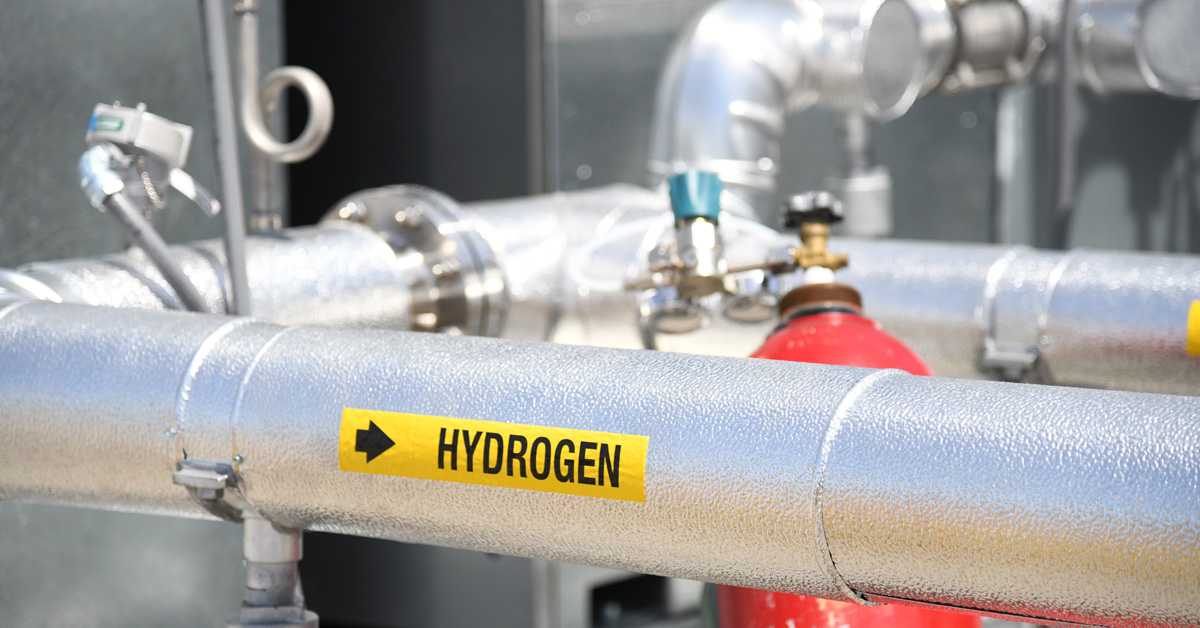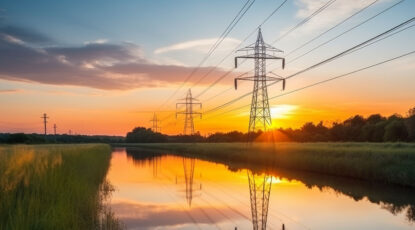Bloom has long seen hydrogen as the key to a global pathway toward a zero-carbon future. We were founded on the development of the fuel-flexible Bloom Energy Server, and recently announced the commercial availability of our hydrogen electrolyzer.
Our goal is to enable governments and businesses to invest in assets that guarantee a more sustainable present while accelerating the charge towards a hydrogen-powered future. Without hydrogen power, high-emission industries including steel and cement manufacturing, marine transport, and long haul transportation would be incredibly difficult to decarbonize, inhibiting the path to net-zero.
Hydrogen as a Cost-Effective Energy Solution
MIT recently published a study suggesting a hydrogen-powered future isn’t as far off as many might think. This further substantiates our belief in hydrogen’s role in the path to net-zero.
“Our study’s essential takeaway is that hydrogen-fired power generation can be the more economical option when compared to lithium-ion batteries— even today, when the costs of hydrogen production, transmission, and storage are very high,” says Drake Hernandez, a graduate researcher in MIT Energy Initiative (MITEI). Adds MITEI research scientist Emre Gençer, “If there is a place for hydrogen in the cases we analyzed, that suggests there is a promising role for hydrogen to play in the energy transition.”
The study was conducted within the context of the United States’ goal to achieve zero-carbon electricity generation by 2035. To reach this goal, energy providers are ramping up renewable resources including solar and wind power. But these technologies’ capabilities are dependent on sunshine and wind. Additional generation and storage is required from other sources to deliver power when it is needed, especially during peak times of high electric demand. Currently, natural gas is primarily used to fill these gaps.
“As we move to more and more renewable penetration, this intermittency will make a greater impact on the electric power system,” says Gençer. “If we’re to achieve zero-carbon electricity, we must replace all greenhouse gas-emitting sources.”
Gençer and Hernandez developed a model that reveals the pros and cons of the alternate energy sources used with greater precision, focusing on determining the most cost-effective solutions. The result was that hydrogen turned out to be a more affordable alternative.
The Threat of Diesel
As hydrogen is proving to be an economically viable energy solution, now is the time to rethink our approach to diesel generators. These “back-up” power solutions are dirty sources of energy, producing haze-inducing NOx and particulate matter that endangers the health of local communities. Unfortunately, diesel generators have been increasingly implemented amid the rise of bans on natural gas across the country. They are now being utilized more often, as extended periods of extreme weather across the country generate more demand for back-up power. With this comes a surge in emissions of harmful pollutants, which threaten public health and the environment.
While natural gas bans are well-intended, we are already seeing their negative impact in states such as California, where Governor Newsom proclaimed a State of Emergency last July due to an “imminent energy supply shortfall expected for the remainder of Summer 2021 and Summer 2022.” Record-breaking extreme heat is increasing energy demand in California and across the West, straining in-state supplies and reducing imports. This demand has led to investment in more diesel generators.
A recent study by M.Cubed revealed that the backup generator population in the South Coast Air Quality Management District has increased by 22% since 2020 and by 34% in the Bay Area Air Quality Management District since 2018. The pollution from these generators alone is predicted to trigger upwards of $136 million in annual health costs.
In one Oakland, CA community where pollution levels have increased drastically, children younger than five are 1.5 times more likely to be sent to the emergency room with severe asthma than other parts of Alameda County, according to a 2016 report from the Alameda County Public Health Department.
It is important to note that this proliferation of diesel power is in direct conflict with Californians’ opinions on the future of energy in their state. Recent polling by FM3 revealed that nearly 75% of California voters support alternative, non-harmful energy solutions, like fuel cells and electrolyzers, and more than half desire to see diesel generation reduced.
Bloom Provides the Solution
California is just one example of prevalent global concern for the future of our energy mix and its impact on people and the environment. It is crucial that governments align with their constituents and invest in technologies that can mitigate the dangerous effects of climate change today. The commercially available Bloom Fuel Cell is proven to provide 24/7 electricity while emitting virtually no air pollutants, such as oxides of nitrogen or sulfur dioxide.
There is an opportunity for public and private organizations alike to partner with forward-thinking energy companies such as Bloom to begin the transition to hydrogen power today. With MIT’s new findings, we now know that the desire to do so can become an economically feasible reality. This is the time to act—we cannot afford not to.



